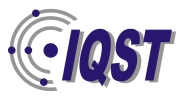Planning and Implementing Classroom Assessment Projects
Objectives:
- To develop skills to plan assessment;
- To improve ability to follow plan;
- To develop ability to work productively with others.
The classroom assessment project has three main phases, and each phase consists of three steps:
| Phase | Steps | Description |
| I Planning a classroom assessment project | 1. Choosing the class in which to carry out the project | In your initial project focus on class you will teach again |
| 2. Focusing on assessable questions about student learning | Identify single teaching and learning goals and questions | |
| 3. Designing an assessment project | Map out the path by which you will seek an answer to the assessable question and choose the tools that will help you get that answer | |
| II Implementing a classroom assessment project | 4. Teaching the lesson related to questions | Plan to integrate assessment activity into your regular class activities as smoothly as possible |
| 5. Assessing learning by collecting feedback | Choose a simple assessment technique | |
| 6. Analyzing the feedback | Prepare yourself for surprising feedback. Look carefully at both positive and negative results. | |
| III Responding to the results of assessment | 7. Interpreting the results and formulating response to improve learning | Try to understand students´ feedback. Think through how you can respond to their feedback in way that will help the students to improve their own learning. |
| 8. Communicating the results to students and learning | Maximize the possible positive impact of assessment | |
| 9. Evaluating assessment project´s effect on teaching | Assess the outcomes and impact your teaching on students learning |
- Formulate 3 goals (at least) for your project.
- Suggest some questions related to formulated goals.
- Design your small assessment project.
- How many steps does your project have?
- Discuss you project with your lecturer or with your schoolmates.
- Do you think that science teacher used relevant questions to assess skills?
- Do you have any experience from your previous school life (as a secondary student) with the questioning to develop problem solving and recognition of pre-concepts?
The guidelines below sum up the best advice, based on experience with classroom assessment.
- Start with assessable goals.
- Focus on alterable variables.
- Build in success.
- Get students actively involved.
- Start small.
- Set limits on time and effort you will invest.
- Be flexible and willing to change.
- Work with other teachers who share your interest.
- Remember that students must first learn to give useful feedback and then must practice doing so.
- Enjoy experimentation and risk-taking, not just success.
Bransford, J.D., Brown, A.L., Cocking, R.R. (Ed) How People Learn. Brain, Mind, Experience, and School. Washington, D.C.: National Academy Press, 2000. First Edition. ISBN 0-309-07036-8.
ReferencesAngelo T.A., Cross, K.P. Classroom Assessment Techniques. San Francisco: Jossey-Bass Publisher, 1993. Second Edition. ISBN 1-55542-500-3.
Mintzes,J.J., Wanderee, J.H., Novak,J.D. (Ed) Assessing Science Understanding. A Human Constructivist View. San Diego: Academic Press, 2000. ISBN 0-12-498365-0.




